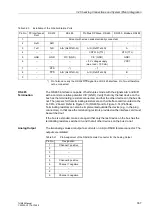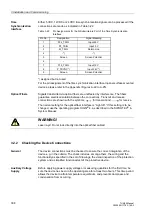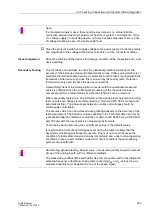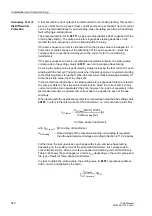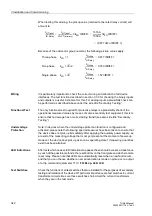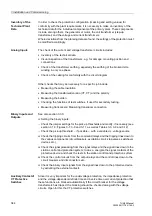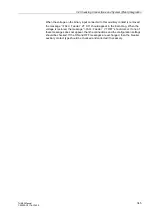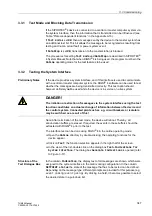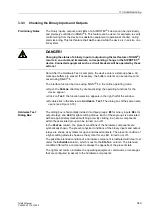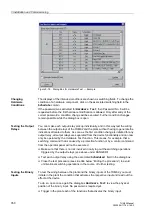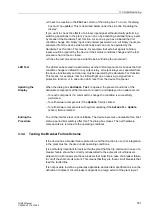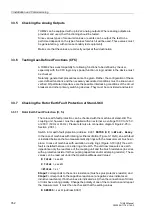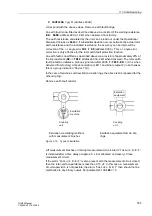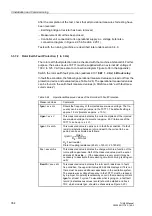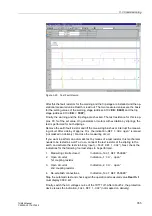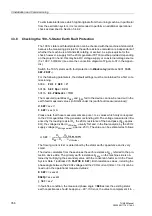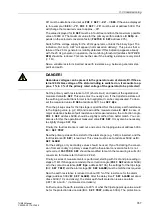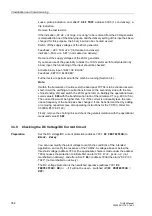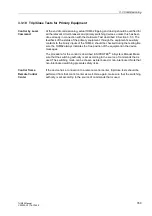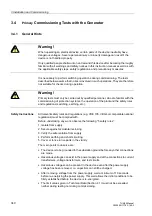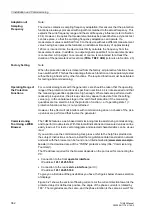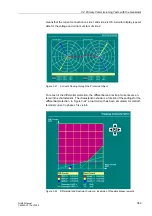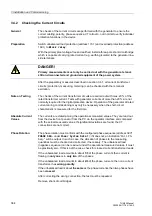
3.3 Commissioning
351
7UM62 Manual
C53000-G1176-C149-3
G
Check the reaction in the
Status
column of the dialog box. To do so, the dialog
box must be updated. This is described below under the side title “Updating the
display”.
If you want to check the effects of a binary input signal without actually performing
switching operations in the plant, you can do so by activating individual binary inputs
by means of the Hardware Test function. As soon as you have initiated the first
condition change of a binary input, and entered password no. 6, all binary inputs are
separated from the device side functionality and can only be operated by the
Hardware Test function. This means, for example, that external signals to binary
inputs would be ignored by the device if their status conditions change and the test
procedure had not been closed.
G
Close the test procedure (see side title below “Ending the procedure”).
LED Test
The LEDs can be tested in a similar way as other I/O components. As soon as the first
condition change is initiated for any output relay, all output relays are separated from
the device functionality and can now only be operated by the Hardware Test function.
This means, for example, that no LED will light up on receiving a signal from a
protection function, or in case of an LED reset from the device front panel.
Updating the
Display
When the dialog box
Hardware Test
is opened, the present conditions of the
hardware components at that moment are read in and displayed. An update occurs:
−
for each component, if a command to change the condition is successfully
performed,
−
for all hardware components if the
Update
field is clicked,
−
for all hardware components with cyclical updating if the
Automatic Update
(20sec) field is marked.
Ending the
Procedure
To end the interface test, click on
Close
. The device becomes unavailable for a brief
start-up period immediately after this. The dialog box closes. Then all hardware
components are returned to the operating conditions.
3.3.4
Testing the Breaker Failure Scheme
If the device has a breaker failure protection, and that function is used, its integration
in the plant must be checked under operating conditions.
It is particularly important for tests within the plant that the trip command in case of a
breaker failure should be correctly retransmitted to the adjacent circuit breakers.
Adjacent circuit breakers are those breakers that must trip in case of a breaker failure
to cut off the short-circuit current. This means that they are those circuit breakers that
feed the faulted line.
It is not possible to define a generally applicable, detailed test specification since the
definition of adjacent circuit breakers depends to a large extent of the plant layout.

